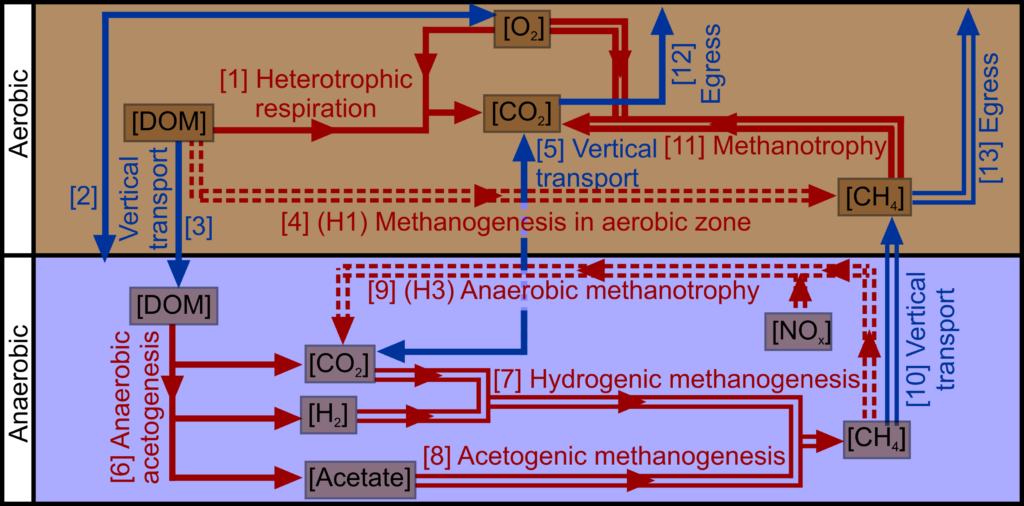Global models of biogenic gas production often rely on mathematical models that approximate how microbes mineralize substrates. These models are incredibly important because they tell us about how the natural world emits or sequesters greenhouse gases (e.g. carbon dioxide, methane, nitrous oxide, etc.).
However, when it comes to representing microbial communities, our models are pretty limited. In reality, these processes are incredibly complex. In many cases we’re only just beginning to understand what’s really going on at a microbial level. However, models are limited by the complexity of the system of differential equations that can be represented. As we add more and more complex representations, it comes at a time cost for running the computational model. Even worse, if we add in equations for processes that we really don’t understand, we could actually make our models worse instead of better.

It is pretty clear though that our current models are overly simplistic with regards to microbes, though. We have some big assumptions baked in to many. We often assume microbial populations don’t change in size, for example. This particular assumption we have ample evidence to the contrary of. We also assume that carbon cycling isn’t affected by nitrogen cycling. That’s also not true. However, the computational costs (and the time costs of implementing these changes into the model codes) are pretty high, and it’s so far been deemed unnecessary to deal with those assumptions largely.
I seek to challenge those assumptions with novel modeling approaches. Improvements to these model assumptions will lead to improved forecasting of the natural climate cycle, which in turn will lead to better understanding of how climate change is likely to progress in the world around us.